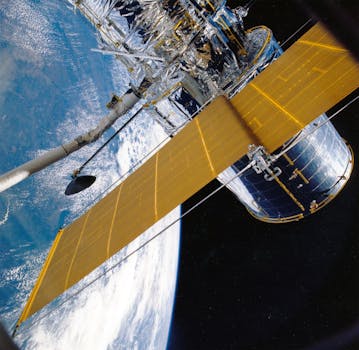Navigating the Skies: Insights into Recent Satellite Telecommunications Innovations

Navigating the Skies: Insights into Recent Satellite Telecommunications Innovations
Satellite telecommunications have come a long way since the launch of the first commercial satellite, Intelsat 1, in 1965. Over the years, the industry has witnessed significant advancements in technology, leading to improved connectivity, increased bandwidth, and reduced costs. In recent years, the satellite telecommunications sector has experienced a surge in innovations, transforming the way we communicate and access information.
One of the most significant recent developments in satellite telecommunications is the launch of low-Earth orbit (LEO) constellations. These constellations comprise hundreds or even thousands of small satellites that operate in low Earth orbit, providing global coverage and high-speed connectivity. Companies like SpaceX, Amazon, and OneWeb are leading the charge in this area, with plans to launch thousands of satellites in the coming years. LEO constellations have the potential to revolutionize the telecommunications industry by providing fast, reliable, and affordable internet access to remote and underserved communities around the world.
Advances in Satellite Technology
Recent advancements in satellite technology have enabled the development of more efficient, compact, and powerful satellites. One of the key innovations in this area is the use of phased array antennas, which allow satellites to steer and shape their beams electronically. This technology enables satellites to provide more targeted and efficient coverage, reducing interference and increasing throughput. Another significant development is the use of high-throughput satellites (HTS), which offer significantly higher bandwidth and faster data speeds than traditional satellites.
HTS satellites use a combination of advanced technologies, including spot beams, frequency reuse, and advanced modulation schemes, to deliver high-speed connectivity. These satellites are particularly useful for applications that require high bandwidth, such as video streaming, online gaming, and cloud computing. The use of HTS satellites has become increasingly popular in recent years, with many satellite operators launching HTS satellites to meet the growing demand for high-speed connectivity.
Impact on the Industry
The recent innovations in satellite telecommunications have had a significant impact on the industry. One of the most notable effects is the increased competition, which has driven down costs and improved services. The launch of LEO constellations, for example, has disrupted the traditional satellite telecommunications market, offering faster, more reliable, and affordable connectivity to a wider range of customers. This has forced traditional satellite operators to adapt and innovate, leading to a more competitive and dynamic market.
Another significant impact of recent innovations is the expansion of satellite telecommunications into new markets and applications. The use of HTS satellites, for example, has enabled the delivery of high-speed connectivity to remote and underserved communities, opening up new opportunities for economic development, education, and healthcare. The use of satellite telecommunications has also become increasingly important in the maritime and aviation industries, where it provides critical connectivity for navigation, communication, and safety.
Challenges and Future Directions
Despite the many innovations and advancements in satellite telecommunications, there are still significant challenges to be addressed. One of the major challenges is the issue of space debris, which poses a significant threat to the long-term sustainability of satellite telecommunications. The launch of thousands of new satellites in the coming years will only exacerbate this problem, highlighting the need for more effective debris mitigation and removal strategies.
Another significant challenge is the need for more efficient and sustainable satellite designs. As the demand for satellite telecommunications continues to grow, there will be a need for more powerful and efficient satellites that can meet this demand while minimizing their environmental impact. This will require significant advances in areas such as propulsion systems, power generation, and thermal management. Finally, there is a need for more effective regulatory frameworks to govern the use of satellite telecommunications, particularly in areas such as spectrum allocation and licensing.

